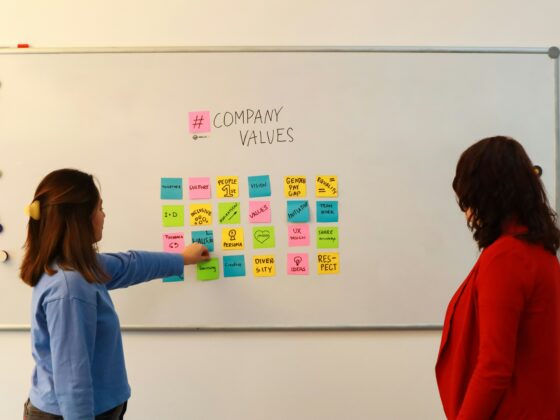
Amplifying operations is critical for the hospitality industry, especially in times of uncertainty. The hotel transaction market specifically has experienced a recent slowdown, leading many hospitality companies to optimize the management of their data and analytics to create solutions tailored to help their businesses succeed.
“We’re a cyclical business, and to the extent that you can manage and flatten those cycles and create more consistency, the better you are in many ways,” said Cory Chambers, executive vice president, chief commercial and analytics officer, HVMG. “The transaction market has been slow, so there hasn’t been nearly as much hotel movement as expected, which makes optimizing these hotels that owners or investors continue to be linked with and managing those more effectively even more important than ever because it’s a lot more difficult to trade and transact hotels.”
Enter HVAnalytics, a proprietary business intelligence (BI) platform developed by HVMG for the needs of multi-hotel portfolios. HVAnalytics analyzes data to give detailed perspectives on the operational complexities of a portfolio of properties. The software integrates data from over 30 sources—including revenue, labor, expenses, guest satisfaction, and market performance—to provide a centralized, real-time view of each property’s efficiency.
“The most effective commercial organizations lead with data analytics because that gets you 80 percent of the way to the answer,” Chambers noted. “And that last mile, the last 20 percent, is always the most difficult part. … If you can use data and analytics to get you there, get you 80 percent of the way there, it can give you an advantage.”
History and Impact on Data
About five years ago, Chambers and the HVMG team began data warehousing from disparate sources. Because the company operates in so many different spaces, such as independent and branded hotels, they found multi-property portfolios were using almost three dozen different data sources that didn’t interact with each other. Chambers said, “We have a good middleware that helps us create HVMG data, but we didn’t have good tools and processes for how to analyze and cross-reference that data to create insights.” Two years ago, the HVAnalytics initiative was formalized, and it became the platform it is today.
Data plays an important role in the hotel industry, but comes with challenges because traditional BI tools can fall short with multi-hotel portfolios. The combination of these tools with the volume of data received from various sources can make it difficult to tackle and use that data effectively.
Chambers also highlighted how, in the process of implementing HVAnalytics, he found the way that the data impacts each other to be an interesting aspect. “What’s most interesting is not any one source or even any two sources or three. It’s when you start to stack two or three of them together, and that’s where the magic comes into play.”
He gave an example: “The ability to look at room revenue across the portfolio or all the way to a specific hotel by day, by segment, and then see the market share by day, by segment, and be able to categorize that into buckets where we won, where we lost, and why we tailor that in a matter of seconds versus hours is so meaningful.”
Features and Technology
With a platform designed around the specific needs of hotel operators and owners, HVAnalytics turns raw data into practical insights. Key features supporting this shift include portfolio-wide dashboards, custom KPI alerts, drill-down analysis tools, predictive forecasting, and more aimed at helping users quickly identify trends, surface problems, and capitalize on opportunities.
HVAnalytics updates the way data is accessed, understood, and acted on. Instead of relying on reports from many third-party data companies, HVMG teams now have real-time visibility into metrics that matter most, from revenue and labor to guest satisfaction and market share. This centralized approach not only saves time but also ensures decisions are based on current, comprehensive information.
“I know some of my peers do have large, in-house teams of database architects and developers and folks that can run deep code. But what’s become very interesting, particularly in the last year and a half, is the ability to create data pipelines that come into our warehouse and create insights in BI in a no-code environment because of the impact of AI,” Chambers explained.
Artificial intelligence (AI) is integral to making software like HVAnalytics work; humans can’t process data as quickly as AI does. However, balance is required when implementing AI. As Chambers described, “When it comes to data, the more human intervention that’s involved can often create higher margins of error. That’s a very critical point to keep your eye on. That said, margins of error work in both directions.”
Futureproofing
To ensure the software remains relevant, Chambers said the next phase of HVAnalytics is to simplify the tool to make it even more user friendly, while increasing functionality. “Our 2.0 version is enhancing top reporting and evolving the reports of the visualization that have proven to be less effective than they were in theory.”
HVMG is taking the perspective that “less is more.” Chambers added, “There are no silver bullets. It’s stacking the two or three things together and executing with consistency across those two or three right things. The trick is twofold. One, determining that shortlist of things to focus on, and second, executing them with excellence over and over and over again.”
As hotel operations grow more complex and data becomes increasingly critical to decision-making, tools like HVAnalytics represent a necessary evolution. By delivering timely, relevant, and actionable insights, the platform empowers teams to respond faster, allocate resources more effectively, and ultimately drive stronger performance across the portfolio. While technology alone doesn’t solve every challenge, HVAnalytics demonstrates how purpose-built solutions that are grounded in the realities of hotel ownership and management can bridge the gap between information and impact.
This is an integral part of how HVMG is evolving, and the key to its success is making sure it’s part of the company’s culture. As Chambers said, “A lot of us in the space are committed to analytics … but it has to become a way you think, plan, and act. It has to be part of how you do what you do instead of an initiative.”






